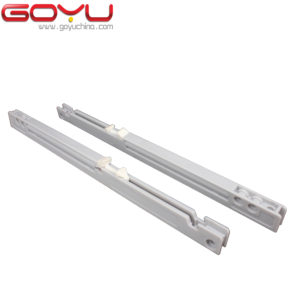How Does a Door Closer Work?
Soft Close Sliding Door Damper and door closer are a mutual sight in most commercial buildings. They are mechanical devices naturally connected to ensure that doors become closed after patrons, residents and other building-users open them.
Local building codes typically control what
exits must be outfitted with Soft Close Sliding Door Dampers. Some may necessitate
all doors have them. At the very least, most regions need them on fire doors.
The purpose for this is that fire doors are to remain closed at all times when
not in instant use. This advantages to ensure that, should a fire break out in
the building, flames do not spread from one part of the building to another
before firefighters can carry the blaze under control.
Door closers are either surface mounted or
concealed, and are so-named due to how they are installed on (surface mounted)
or within (concealed) the door. Surface-mounted devices appear as a small box
attached to the top corner of the door. A jointed "arm" extends from
the top of the box to the frame where it is bolted in. A concealed device is mounted
within the material of the door itself, meaning that the only part visible to
the eye is the arm.
Door closers come in two major types:
manual and automatic. The most common is the manual type. Over seventy percent
of those found in commercial buildings in North America are this type.
Additionally, manual door closers may be
overhead or jamb mounted. The overhead style is more common, particularly on
older public buildings. This type looks like the typical box and arm device.
A jamb-mounted device is installed on the
inner frame of the door and the inside edge of the door. The mechanism is only
visible when the door is open. Once it closes, a jamb-mounted device is
invisible on both the interior and exterior side.
Manual door closers (whether overhead or
jamb-mounted) work on the principle of pneumatics (air pressure) and stored
energy. The device stores the energy that is generated when someone pushes the
door open. It then uses this energy to close it without any additional human
force being applied.
Closing speed can be controlled and
adjusted as desired. Some use hydraulic dampers (these are most common,) others
employ spring mechanisms. Sets of screws are adjusted to achieve desired
closing and latching speed. (Many regions have building codes which mandate
closing speed on door closers, usually in deference to disabled patrons who may
take longer to enter and exit.)
Automatic door closers, as the name
suggests, use electrical power instead of stored energy. This style is less
common, due to the amount of power required and the interest of economy and
conservation. Automatic devices are typically found on buildings where
particular entrances/exits are highly controlled and monitored and buzz-in/out
is employed, such as residential care homes.
Door closers that are intended for use on
fire doors must be fire-rated. Devices that are fire rated have been tested by
a recognized testing facility to ensure that they can withstand heat/flames.
They must be able to hold fire at bay for as long as the fire door itself does;
a typical one is usually required by law to contain fire/flames for a minimum
of three hours.




Comments
Post a Comment